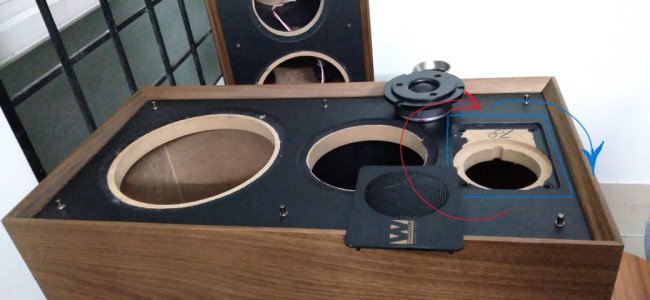Damping the enclosure:
The speaker box is not braced as the midrange enclosure in the middle of the box doesn’t make things easy. can see only 1.5 inch gap between the sidewall and midrange enclosure. now damping the enclosure to reduce the resonance is not an easy task as every material to be taken inside the cabin through woofer and tweeter hole.
View attachment 72114
Damping material for one wall weights 550 grams. the one made for woofer back side is 190 grams. Totalling to approximately 1300 grams per speaker weight increase.
View attachment 72115
View attachment 72116
Just started by cutting the sheet based on the inner side wall measurement. This is not an east task with only blade and scissors. would appreciate if its pre-chopped as per the needs of specific kits what GR Research sells. Really its a pain and tedious task.
View attachment 72118
View attachment 72119
Have to remove the tweeter to gain access to the space behind it. Used a 50MM chisel to pope the face plate then there are 3 screws to pull the tweeter out. need to be carefully and slowly done. this is a brand new chisel and needs to be sharpened, I used a sand paper to sharp it.
View attachment 72120
View attachment 72121
View attachment 72122
One observation, the tweeter doesn't have any + or - marking for the terminals. I just pulled the speaker cable and found they used a red paint on the terminal lead to mark +ve. The inner side of terminal is not painted though, if they have painted tweeter may not have put any output. I have to remove them as I need to twist the speaker wire and solder it.
View attachment 72123
View attachment 72124
Put one by one peaces, started from the top side by sliding the material through the gap of midrange enclosure and side wall. and my son helped to push the upper side peaces as my hand cannot get in the tweeter hole. Or else i may need a specialised tool to push them to the wall.
View attachment 72125
View attachment 72127
View attachment 72128

audiosciencereview.com



